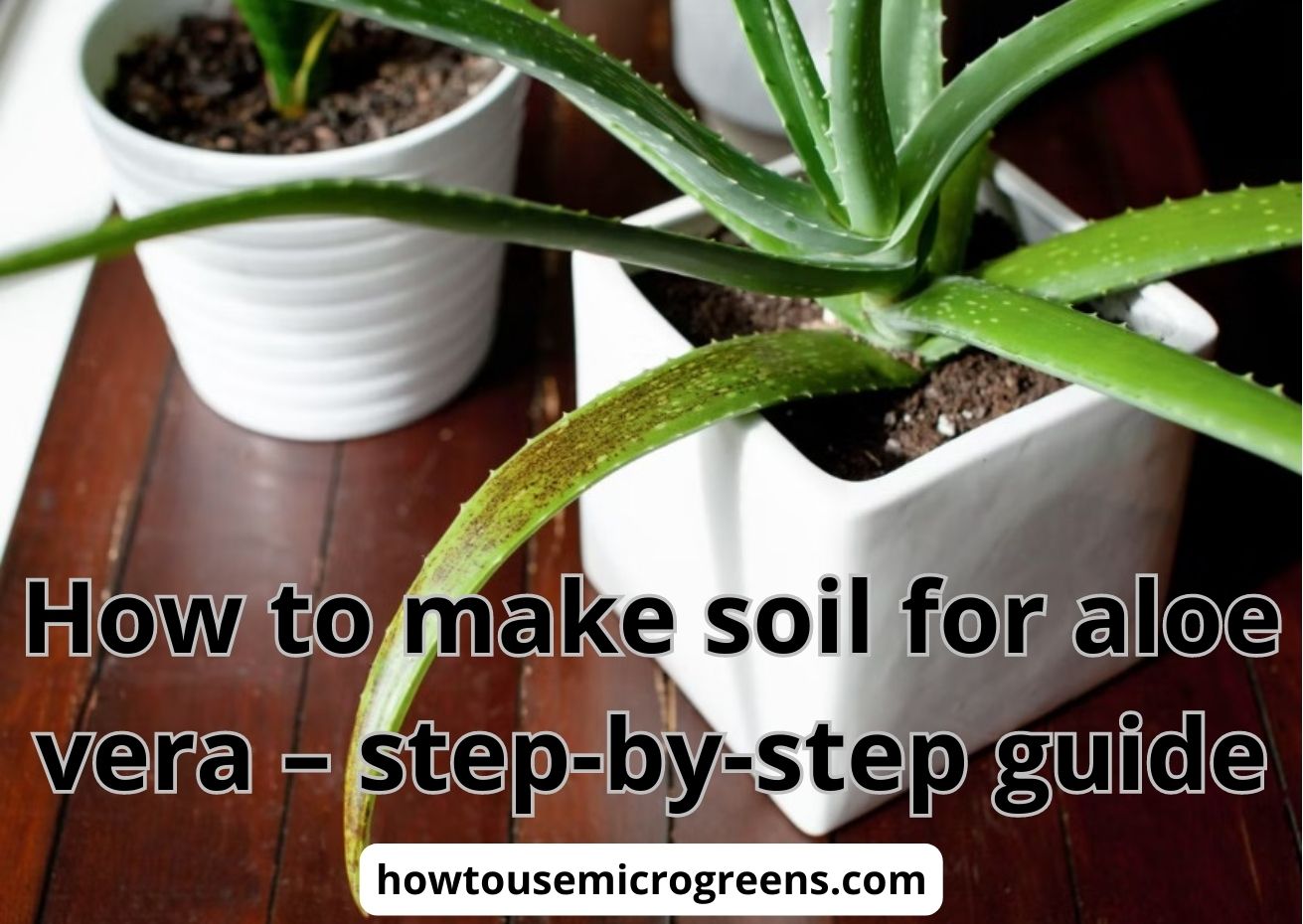Aloe plant, a widely recognized succulent plant acclaimed for its remarkable healing properties (aloe vera gel), necessitates a precisely balanced aloe vera soil blend to flourish and achieve optimal growth.
To ensure a fruitful cultivation journey with aloe plant and fully capitalize on its myriad advantages, it is imperative to grasp the significance of soil composition and employ appropriate constituents to curate a customized soil mixture tailored specifically to the needs of aloe vera plants.
In this all-encompassing guide, we shall accompany you on a step-by-step expedition to concoct an unrivaled succulent soil mix, thereby elevating the distinctiveness of your gardening experience and aloe vera plant care.
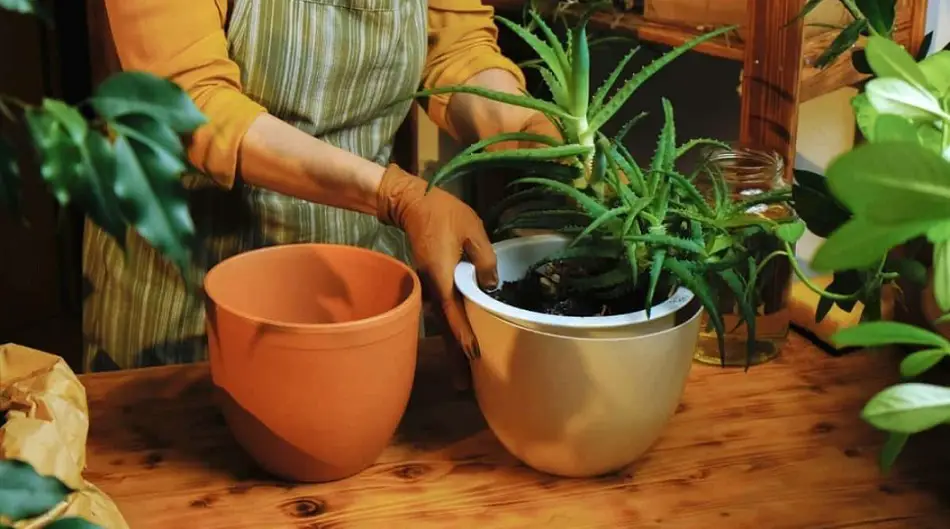
Contents
- 1 Understanding the vitality of soil for aloe vera
- 2 Characteristics of an exemplary aloe vera soil mixture
- 3 Selecting the appropriate container for aloe vera
- 4 Essential ingredients for crafting a DIY aloe vera soil mix
- 5 Mixing the ingredients: step-by-step guidelines
- 6 Adjusting the soil mix for specific aloe vera varieties
- 7 Preparing the pot and planting the aloe vera
- 8 Proper watering techniques for aloe vera in the new soil mix
- 9 Providing adequate light and temperature conditions
- 10 Caring for aloe vera in the new soil mix: pruning and maintenance
- 11 Signs of healthy aloe vera growth in the new soil mix
- 12 Troubleshooting tips for soil-related issues
- 13 Tips for success: best practices for aloe vera soil mix
- 14 Conclusion
- 15 Frequently asked questions
Understanding the vitality of soil for aloe vera
The role of succulent soil in the growth, development, and planting aloe vera is of utmost importance, particularly considering its origin as a desert plant and its unique prerequisites.
Soil for aloe provides vital support to aloe roots, ensures the provision of essential nutrients, regulates moisture levels, and facilitates proper drainage.
Given that aloe vera is native to arid regions, it becomes indispensable to replicate its natural habitat by precisely formulating the soil composition, thereby preserving its well-being.
By creating an environment that offers the right soil conditions, you can safeguard the health of aloe vera roots.
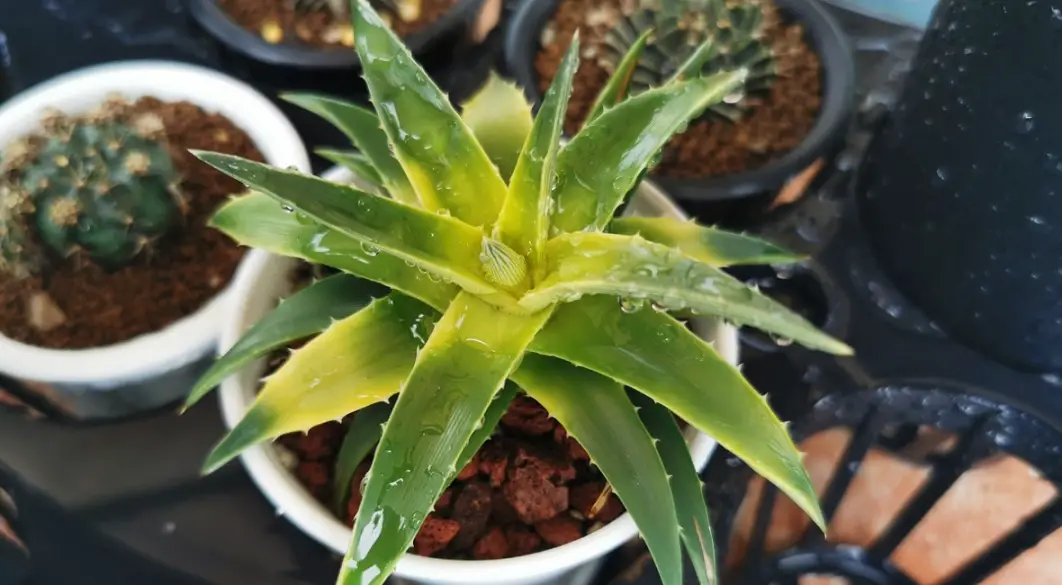
Characteristics of an exemplary aloe vera soil mixture
An ideal soil mix for aloe vera must possess distinct characteristics that cater to the plant’s unique needs:
Superior drainage: Aloe vera cannot tolerate excessive moisture, making well-drained soil a necessity. The finest soil mix for aloe vera should exhibit excellent drainage to avert waterlogging and the onset of root rot.
Moisture retention: While efficient drainage is crucial, the soil mix should retain a certain amount of moisture to ensure adequate hydration for the plant between watering sessions.
Sufficient aeration: Aloe vera roots necessitate oxygen for respiration. Hence, the soil mix should offer ample aeration, allowing the roots to access air and promoting robust growth.
Nutrient-rich: Aloe vera thrives when provided with soil that abounds in nutrients. An ideal blend of organic matter and minerals creates a well-balanced soil mix that facilitates healthy development.
Selecting the appropriate container for aloe vera
The selection of an apt container for aloe vera is as pivotal as choosing the right soil mix. When selecting a pot for your aloe vera plants, consider factors such as size, material, and drainage.
Ensure that the chosen pot provides sufficient space for the roots to grow comfortably. Opt for a container that is slightly larger than the current one to accommodate future growth.
Furthermore, ensure that the selected container possesses drainage holes to prevent water accumulation and potential root rot.
By considering these factors, you can provide an optimal container for your precious aloe plants.

Essential ingredients for crafting a DIY aloe vera soil mix
To curate the perfect DIY soil mix (succulent or cactus soil) for your aloe vera plants, you will require several indispensable ingredients:
- Organic and regular potting soil: Commence with high-quality organic potting soil as the foundation of your mix. This provides the necessary structure and nutrients to support aloe vera growth.
- Perlite or pumice: Incorporate perlite or pumice into the potting mix. These materials enhance drainage, prevent soil compaction, and reduce the risk of root rot by facilitating the escape of excess water.
- Coco coir or peat moss: Add coco coir or peat moss to enhance moisture retention and ensure uniform water distribution within the soil. These organic components ensure that aloe vera roots receive adequate hydration.
- Sandy soil: Blend coarse sand into the mix to improve drainage and establish a well-aerated environment for the roots. Coarse sand prevents waterlogging and promotes healthier root development.
- Vermiculite or limestone: Achieve the optimal pH balance of the soil by incorporating vermiculite or limestone. These additives effectively adjust the soil’s acidity or alkalinity, ensuring optimal nutrient absorption for your aloe vera.
- Compost or organic fertilizers: Enhance the nutrient content of the soil by adding compost or organic fertilizers. These natural supplements provide a slow-release source of nourishment, fostering robust growth and development of your aloe plant.
By skillfully combining these ingredients in the appropriate proportions, you can create a personalized potting mix that boasts excellent drainage and offers ample nutrients for your beloved aloe vera.
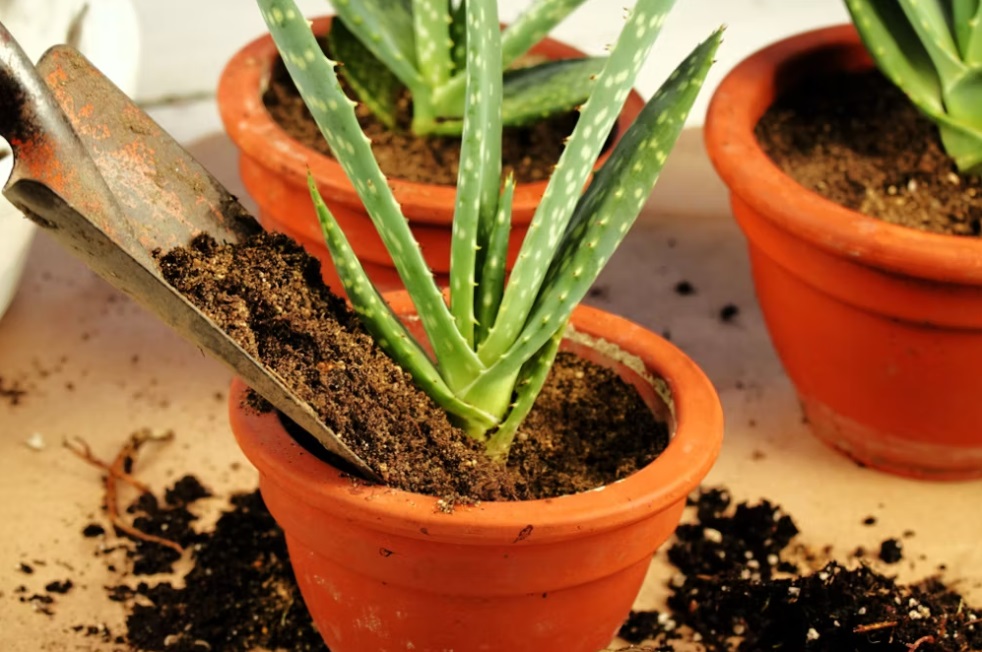
Mixing the ingredients: step-by-step guidelines
How to make soil for aloe vera? To craft your distinct DIY aloe vera mix, diligently follow these straightforward steps:
- Prepare a spacious container or tarp to facilitate the mixing process. In the container, combine equal amounts of organic and regular potting soil with perlite or pumice. For example, if you utilize two cups of potting soil, add an equal amount of perlite or pumice.
- Introduce one part of coco coir or peat moss to the potting mix. If you have used two cups of potting soil, incorporate one cup of coco coir or peat moss.
- Blend one part of the sandy soil mix. Once again, if you have utilized two cups of potting soil, add one cup of sand.
- Meticulously blend all the ingredients until they are thoroughly mixed and uniformly distributed.
Adjusting the soil mix for specific aloe vera varieties
Distinct varieties of aloe vera may exhibit varying soil preferences. Conduct thorough research on the specific needs of your aloe vera variety and adjust the potting mix accordingly. Certain varieties thrive in drier conditions, while others tolerate slightly higher moisture levels in the potting mix.
Customize the proportions of ingredients like sand or coco coir to achieve the desired moisture level in the potting mix.
By tailoring the mix to meet the precise requirements of your particular aloe vera variety, you create an environment that nurtures healthy growth and flourishing plants.

Preparing the pot and planting the aloe vera
Before planting aloe vera in the new mix, keep these essential steps in mind:
- Ensure that the chosen pot possesses drainage holes at the bottom, facilitating the escape of excess water. This prevents waterlogging and potential root issues.
- Fill the pot with the prepared mix, leaving ample space at the top to comfortably accommodate the aloe vera plant.
- During transplanting, delicately remove the plant from its current container, taking care not to damage the delicate roots.
- Place the aloe vera plant in the center of the pot and gently fill the remaining space with the mix. Firmly press the soil around the base of the plant to provide stability and support.
Proper watering techniques for aloe vera in the new soil mix
Adhering to proper watering techniques is crucial for the health and well-being of your recently planted aloe vera in the new mix.
Thoroughly water the plant until water drains out of the pot’s bottom. This ensures even moisture distribution within the soil and facilitates proper hydration.
Allow the soil to partially dry out before watering again. Aloe plants prefer slightly drier conditions, and overwatering can lead to root problems and other complications.
To determine watering needs, check the soil’s moisture level by inserting your finger about an inch into the soil.
If the soil feels moist, wait a few more days before watering again. Following these watering guidelines maintains the optimal moisture balance for your aloe vera plant.
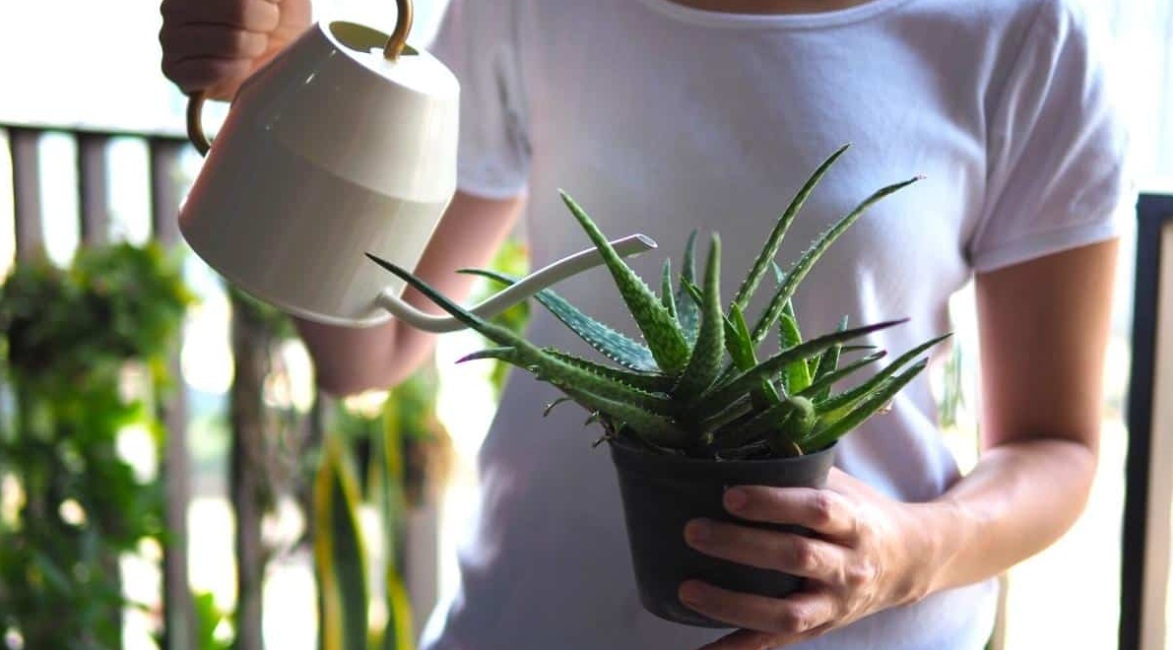
Providing adequate light and temperature conditions
Aloe vera plants thrive in bright indirect sunlight, making them ideal for placement near a window that offers ample natural light without direct sunlight exposure, particularly during intense midday hours.
Maintaining temperatures between 55 °F (13 °C) and 80 °F (27 °C) is crucial for optimal growth and health. Protect the plant from extreme cold or hot drafts, as they can adversely affect its well-being.
By ensuring appropriate light and temperature conditions, you create an ideal environment for your aloe vera plant to flourish.
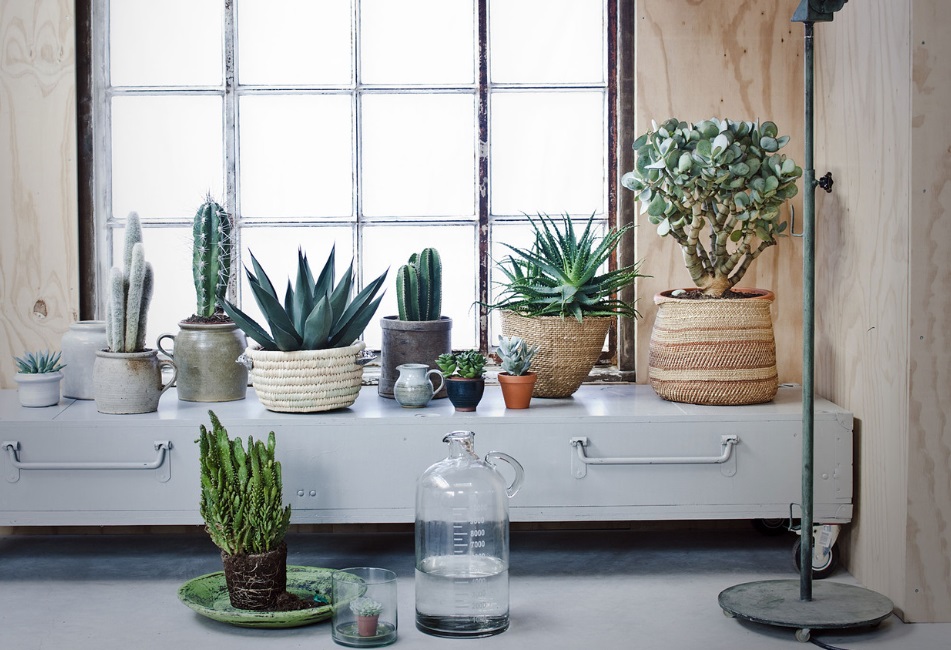
Caring for aloe vera in the new soil mix: pruning and maintenance
Regular maintenance and pruning are essential to preserving the health and aesthetics of your aloe vera plant.
Gently remove any dried or damaged leaves to enhance the overall appearance and prevent pest infestations and diseases.
Prune when the offsets, or “aloe vera pups,” of the mother plant reach an appropriate size. Separate these offsets from the mother plant and repot them using the same mix.
Periodically clean the leaves to ensure they remain free from dust, promoting optimal photosynthesis.
By following these maintenance practices, you ensure the continued health and thriving growth of your aloe vera plant.
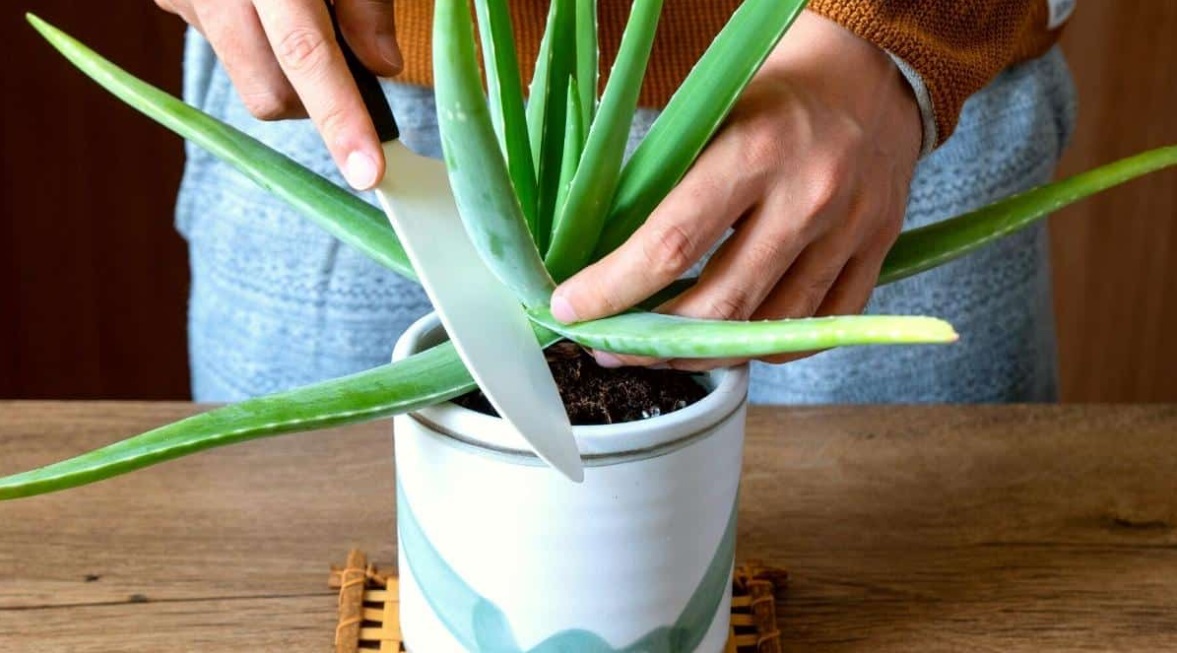
Signs of healthy aloe vera growth in the new soil mix
A thriving aloe vera plant in the new mix exhibits several indicators of growth:
- Vibrant, plump, and firm leaves with a rich green color.
- Development of new shoots or pups, indicating active growth and the plant’s ability to propagate.
- Check the root system during aloe vera repotting; healthy roots appear white, suggesting successful establishment in the new mix. Observing these signs ensures your aloe vera plant thrives in its new soil environment.
However, it’s also essential to recognize common soil-related issues and troubleshoot them effectively.
Overwatering: Yellowing or mushy leaves may indicate overwatering. Excessive moisture can lead to rot and fungal diseases, as they rely less on soil moisture. Adjust your watering frequency and allow the soil to dry out more between watering.
Ensure the pot has drainage holes, and consider using a well-draining mix to prevent waterlogging.
Underwatering: Signs of underwatering include shriveled or wrinkled leaves. Aloe plants prefer slightly drier conditions, but prolonged water scarcity can cause stress and affect their health.
Increase watering frequency, ensuring the soil is evenly moist without becoming waterlogged. Monitor moisture levels by checking the soil with your finger and adjusting accordingly.
Poor drainage: Inadequate drainage results in water accumulation, which is detrimental to aloe plants. Clear any blockages in the drainage holes.
Improve drainage by adding more perlite or pumice to the mix. These materials create air pockets, prevent compaction, and enable excess water to escape, promoting healthy root growth.
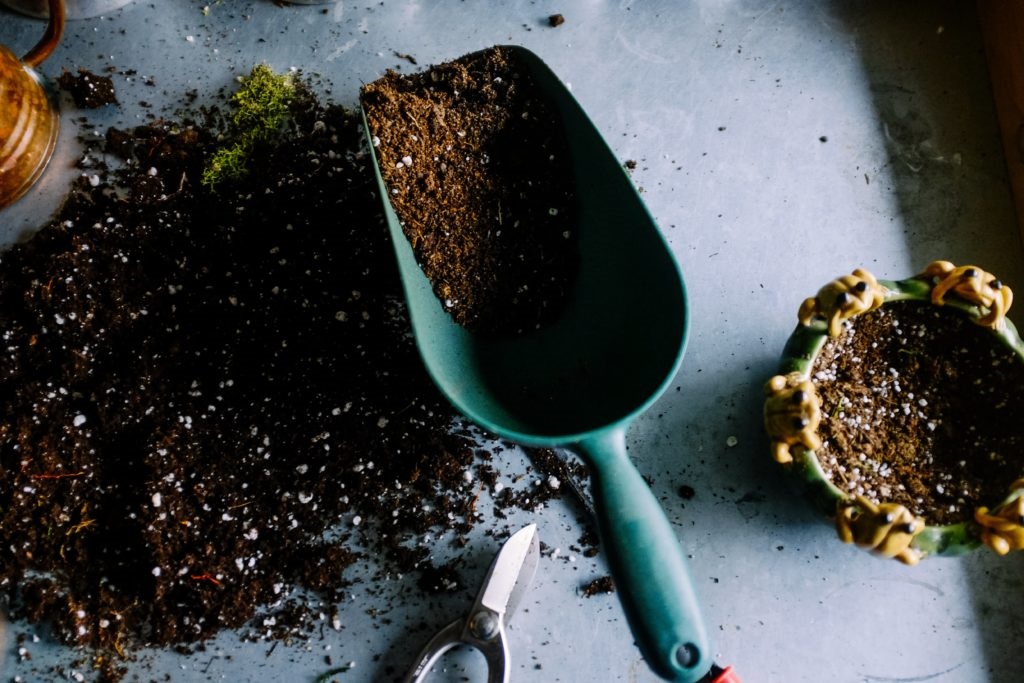
Tips for success: best practices for aloe vera soil mix
To foster the healthy and thriving growth of your aloe plants, it is important to adhere to these best practices.
Use containers with drainage holes to prevent waterlogging and choose a mix specifically formulated for succulent plants, or create your own using the recommended ingredients. Water your aloe vera sparingly, allowing the soil to dry out between watering.
Provide bright indirect light and maintain suitable temperature conditions for optimal growth.
Lastly, regularly monitor your succulent plants for signs of pests, diseases, or nutrient deficiencies. By following these guidelines, you can ensure the well-being of your aloe plants.

Image source: pinterest.com
Conclusion
Crafting the best soil for aloe vera plants is a transformative journey that unlocks the full potential of these remarkable succulents.
By understanding the significance of soil composition, employing the right ingredients, and adhering to proper care practices, you create an environment that nurtures healthy growth and vibrant foliage.
Remember to tailor the soil to meet the specific needs of your aloe vera variety, provide adequate light and temperature conditions, and maintain regular maintenance routines. By following these guidelines, you ensure a rewarding gardening experience and the long-term prosperity of your aloe vera plants.
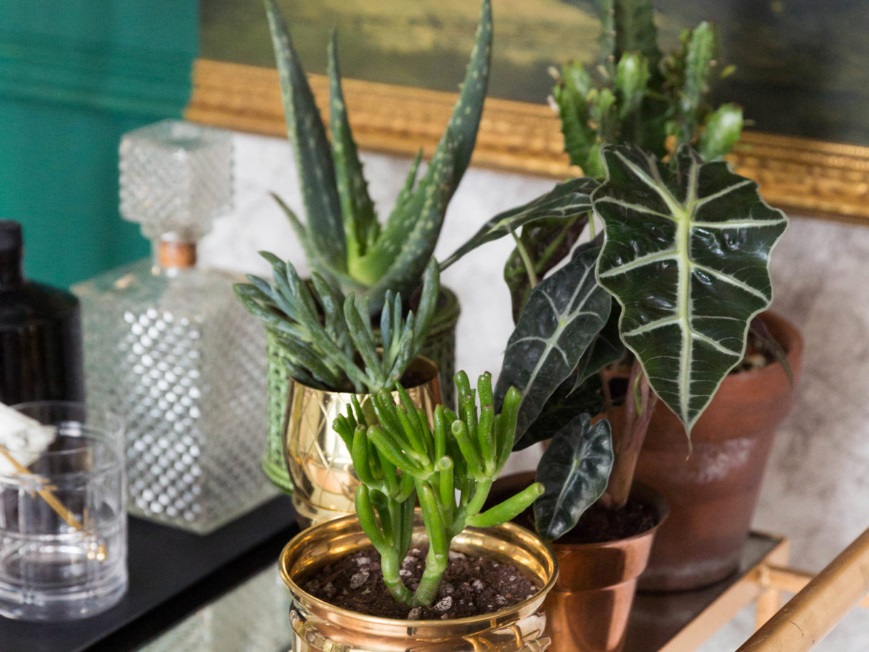
Frequently asked questions
What is the best soil mix for aloe vera plants?
The best soil for aloe vera plants is one that provides optimal drainage and nutrient availability, like loamy soil (also named garden soil).
It typically consists of a combination of organic potting soil, which provides essential nutrients, perlite, or pumice to ensure proper drainage and prevent waterlogging, and coconut coir, or peat moss to retain moisture.
This well-balanced mix allows for healthy root development, moisture regulation, and nutrient uptake, ensuring the overall health and vitality of your aloe vera plants.
The composition of garden soil can vary, but it typically includes a mixture of natural soil, organic matter, and sometimes other additives.
How do you make potting soil for aloe vera?
To make potting soil for aloe vera, simply combine equal parts of organic cactus soil, perlite or pumice, coconut coir, and sand.
Thoroughly mix these ingredients to create a well-balanced soil mix that provides proper drainage and moisture retention for your aloe vera plants.
This DIY soil mix helps create an ideal environment for healthy root development and ensures the overall well-being of your aloe vera plant.
Are coffee grounds good for aloe vera plants?
Coffee grounds are not recommended for aloe vera plants. Aloe vera prefers slightly acidic to neutral soil like cactus soil, while coffee grounds are acidic and can potentially disrupt the pH balance of the soil.
It’s advisable to avoid incorporating coffee grounds into aloe vera soil mixes to ensure optimal growing conditions for your plants.
Does aloe vera need deep pots?
Aloe vera plants do not require deep pots. Due to the shallow root systems, they prefer pots that are wider rather than deep. A pot with a depth of 6-8 inches is usually suitable for aloe vera plants.
Providing a wider pot allows the roots to spread out horizontally and promotes better stability and overall growth of the plant.
It is important to prioritize the width of the pot to accommodate the spreading nature of the aloe vera’s roots and ensure a healthy and thriving plant.
How to make soil for aloe vera? To learn more please click on the link.

